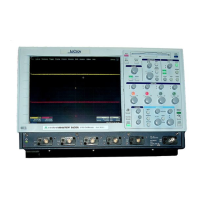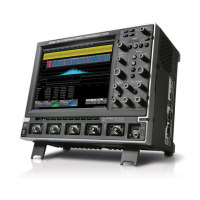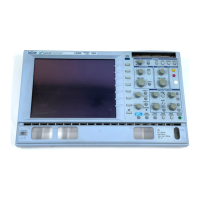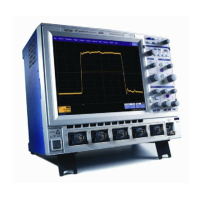208 WM-OM-E Rev I
DDA-5005A.
TAA- Average local baseline-to-trough
amplitude for all local features.
Hysteresis argument
used to discriminate
levels from noise in
data.
Available with DDM2
option.
Standard in
DDA-5005A.
TAA+ Average local baseline-to-peak
amplitude for all local features.
Hysteresis argument
used to discriminate
levels from noise in
data.
Available with DDM2
option.
Standard in
DDA-5005A.
TIE@level Difference between the measured
times of crossing a given slope and
level and the ideal expected time.
For Slope you can choose positive,
negative, or both. For output units
you can choose time or unit interval
(UI). A unit interval equals one clock
period.
The Virtual Clock setup gives you a
choice of Standard (1.544 MHz) or
Custom reference clocks.
You can also use a mathematically
derived Golden PLL to filter low
frequency jitter. The cutoff
frequency is user selectable.
Cutoff Freq = (1/1.667e3) x
Clock Freq
Reference levels and
edge-transition polarity
can be selected.
Hysteresis argument
used to discriminate
levels from noise in
data.
Available with JTA2,
ENET, SDA, and XMAP
options.
Standard in SDA100G,
WavePro 7000A,
WaveExpert, and
sampling scopes.
Time@edge Measures time at each edge on
each digital line
Available with MS-32
option.
Time@level Time at level: Time from trigger
(t=0) to crossing at a specified level.
Time from trigger to crossing
level
Reference levels and
edge-transition polarity
can be selected.
Hysteresis argument
used to discriminate
levels from noise in
data.
Standard parameter.
Top Higher of two most probable states,
the lower being base; it is
Value of most probable
higher state
Gives similar result
when applied to time

